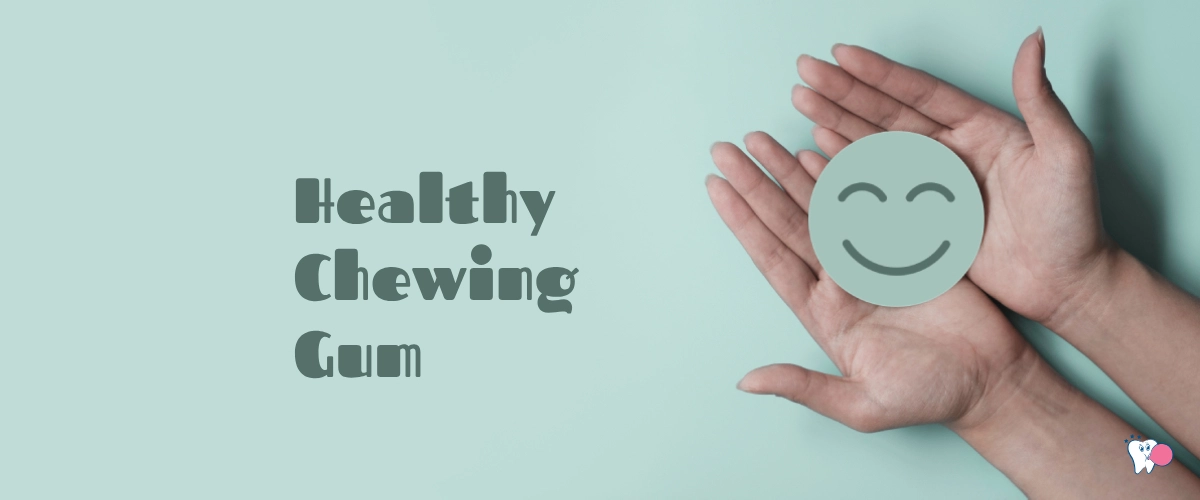People have been chewing gum for millennia. Not all are created equal. You can find them among sweets or among sweet chewing gums in front of cash registers in stores. Only some of them have real health benefits. Find out more about the benefits that healthy chewing gum can provide.
New trend | What is healthy chewing gum? | Main advantages | Healthy teeth (recommended procedure) | Sugar-free gum | Higher saliva flow | Healthy gums with xylitol
New Trend
In recent years, there has been a fundamental change in the field of chewing gum. It started in the USA, where a new trend in the form of interest in so-called healthy chewing gum emerged. The same is happening with a delay also on the Czech market.
It’s not about goods for “sunshine lovers,” but about gum with higher quality ingredients. This results in a higher price, sometimes lower shelf life, or sustainability of taste. On the other hand, the advantage is real flavors, a reduction in tooth decay, etc. Thus, the customer can choose whether to buy cheaper commonly available chewing gum (with controversial additives) or more expensive healthy chewing gum with improved composition (beneficial for health and the environment + sustainable).
What Is Healthy Chewing Gum?
Healthy chewing gum is sugar-free. Only sugar-free gum stimulates saliva production. It helps remove food, rinse bacteria, strengthen teeth, and reduce acid in the mouth, which weakens enamel. It serves perfectly as a supplementary means of dental hygiene.
I consider a healthy chewing gum to be only one that contains the sugar alcohol “xylitol” without the use of more harmful substances such as – aspartame, carmine acid – carmine, brilliant blue FCF, acesulfame K, titanium oxide, sorbitol, BHA and BHT. You can learn more in the article – Controversial additives in chewing gum.
Main Advantages of Healthy Chewing Gum from the Perspective of Oral Cavity
To maximize the benefits of healthy chewing gum, follow the rules – when to chew >
- increases saliva production
- reduces acid occurrence in the mouth
- strengthens tooth enamel
- prevents cavities (cavities)
- according to ADA – American Dental Association
Recommended Procedure for Healthy Teeth
Sugar-free chewing gum, if added as a supplementary means to regular at-home oral cavity care, i.e. brushing teeth (a czech article about brushing teeth) with fluoride toothpaste twice a day and daily cleaning of interdental spaces, can contribute to reducing the risk of tooth decay.
Sugar-Free Chewing Gum
Sugar-free chewing gum can be labeled as “sugar-free” if it contains less than 0.5 g of sugar per serving. Instead of sugar, high-intensity sweeteners such as acesulfame-K, aspartame, neotame, saccharin, sucralose, or stevia are used to sweeten gums. Gum can also be sweetened with sugar alcohols such as erythritol, isomalt, maltitol, mannitol, sorbitol, or xylitol. Unlike sugar, these sweeteners are non-cariogenic because they are metabolized slowly or not at all by cariogenic plaque bacteria. These sweeteners contain fewer calories than sugar.
Higher Saliva Flow
Chewing sugar-free gum after meals can increase saliva flow by stimulating mechanical and taste receptors in the mouth.
The average rate of unstimulated saliva flow in healthy individuals is:
0.3-0.4 ml/min (without chewing).
The physical act of chewing stimulates saliva flow – simply chewing unsweetened chewing gum without flavor stimulates saliva flow at a rate
10-12 times faster than unstimulated rate.
Taste also acts as salivary stimulants. Stimulated saliva flow is significantly higher when chewing sweetened and flavored gum compared to unsweetened, unflavored chewing gum. Increasing saliva volume helps dilute and neutralize acids produced by bacteria in plaque on teeth. These acids can eventually damage tooth enamel, which can result in tooth decay.
Clinical studies have found reduced occurrence of tooth decay in subjects who chewed sugar-free gum for 20 minutes after meals.
Healthy Chewing Gums with Xylitol
According to the study below, it has been shown that using sugar-free chewing gum with xylitol led to a reduction in tooth decay without side effects.
A systematic review and meta-analysis from 2021 by Melanie Nasseripoury et al. – study 1 – examined the use of sugar-free gum sweetened with xylitol and stated that the use of sugar-free gum led to a statistically significant reduction in Streptococcus mutans load, resulting in a decrease in tooth decay occurrence.

